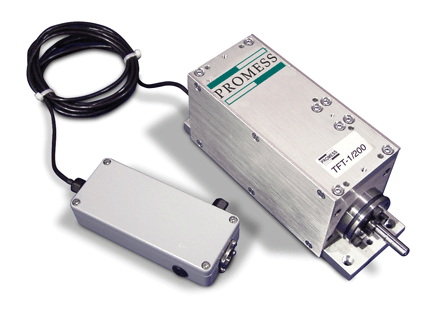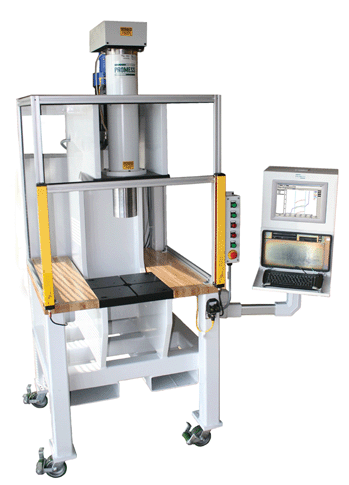“Intelligent assembly” is an approach to quality that shifts the focus from ever-tighter dimensional tolerances to consistent function in the final assembly. It’s based on the use of servo devices and sensors to monitor the assembly operation in real-time, and computer software to determine when the product meets acceptable functional parameters.
Proponents of Intelligent Assembly claim that many components and products could be produced at lower cost with no sacrifice in performance by simply changing the way quality is defined, and adopting intelligent assembly systems. But, the necessary systems aren’t exactly staple items on the shelf of every supplier and that has been one of the factors keeping intelligent assembly from more widespread adoption.
There’s a bit of folk wisdom that says, if the only tool you have is a hammer, it doesn’t take long for everything to start looking like a nail. Since at least the 70’s, manufacturers have been doggedly pursuing “quality” improvements with the only tool available, tighter and tighter tolerances.

Fig. 1-New Promess integrated torque functional test TFT 1/200 is rated at 1 N-m (9 in.-lb) with a maximum rotational speed of 200 RPM in either direction. TFT systems are used by test equipment builders and end users in a broad range of testing and measuring of torque applications, including automotive steering and drive train component testing and assembly, manual window crank final testing, seat testing, bearing pre-load, and torque-to-turn testing.
But adding extra zeros to a tolerance specification, also adds extra zeros to production costs, and there are limits to how much consumers will pay for “quality” achieved that way. Perhaps it’s time to stop looking for perfection, and start looking for some new tools.
Intelligent assembly systems
An intelligent assembly system gives you a whole new toolbox. Intelligent Assembly is based on the idea that function is the consumer’s ultimate measure of quality. Under that definition it doesn’t matter if the components are perfect, as long as they work properly and deliver acceptable value to the user.
If the assembly system is smart enough to tell the difference between good products and bad products as they are being made, then it’s quite possible to loosen tolerances in the supply chain – or at least stop tightening them. That can be done today using a combination of servo-controlled, instrumented assembly equipment, and sophisticated, real-time computer analysis of the process data.
Custom-engineered Intelligent Assembly systems have been available for more than 20 years. Some use a technology called “signature analysis” to monitor and qualify the assembly process.
What this means is that the assembly system records the force/distance, force/rotation, force/time or other critical relationships of a known good assembly to create a profile or “signature” of the process that produced it. By comparing each subsequent operation to the “signature,” and setting upper and lower tolerance limits, production of good functions or tolerances can be assured without the need for subsequent inspection.
The signature is typically represented as a pair of curves on the system’s display. As long as the results of any individual assembly operation fall within the area between the two curves, the product can be expected to perform as specified.
The exact shape of the signature also provides information about the individual parts being assembled, which can be used as input to control strategies for other processes. For example, parts that are too soft or too hard will produce a distinct change in the signature, as will parts with out-of-tolerance assembly details such as hole or shaft diameters.
The technology has been applied in hundreds of different applications ranging from automotive hood latches, to medical catheters, and including many items traditionally thought of as requiring extremely tight dimensional tolerances.
In the hood latch application, for example, the assembly system cycled the latch while the rivet holding it together was peened. It stopped the peening process when the force required to move the latch reached a specified value. That way, all of the latches produced functioned identically, despite wide variations in rivet dimensions and properties.
Medical catheters have a small diameter metal tube crimped to a larger tube that’s attached to the flexible portion of the catheter. If the crimp fails, the catheter either comes apart or closes off, both of which are unacceptable.
A hydraulic press previously used for the crimping operation produced inconsistent results. It was replaced by an Intelligent Assembly system that provides a 100% effort test certification for every catheter produced, and virtually eliminates crimp failures in the field.
Promess builds Intelligent Assembly systems based on a line of proprietary servo-controlled electromechanical presses; a series of precision torque units; and a line of computer-based controls running Windows(tm)-based software. Other suppliers use similar products, most of which are proprietary as well. Until recently, that meant that anyone wanting to use Intelligent Assembly technology was essentially limited to a custom-engineered system.
Assembly components
The situation is changing, though, as the components required to build intelligent assembly systems become standard, and readily available to end users who want to experiment with the technology before committing to it. Promess, for example, in recent years has made a number of individual components available to customers who wanted to build their own systems. These include a small (1 Nm) torque functional test (TFT) integrated torque-monitoring-and-control systems, Fig 1, and a line of customizable servo-press workstations intended to offer a semi-standard solution for high-precision assembly and test applications, Fig. 2.

Fig. 2-New customizable servo-press workstations offer a semi-standard solution for high-precision assembly and test applications, based on Promess’ electromechanical assembly press (EMAP), intelligent control, and integrated sensor technologies. Typical applications include assembly and testing of springs, check valves, anti-lock brake components, shock absorbers, oxygen sensors, and a broad range of fluid measurements.
The new TFT 1/200 is rated at 1 Nm (9 in.-lb) with a maximum rotational speed of 200 RPM in either direction. Each system consists of a torque module containing a servomotor, encoder, torque transducer, and output shaft plus a Promess EMAC electronic controller/monitor.
The torque module can produce output rotation in either direction, and the integral angular encoder provides shaft-angle feedback to the control. Mechanical overload stops to protect the transducer. The TFT replaces the traditional inline motor/transducer torque-sensing system with a single, fully integrated unit.
The workstations are based on the field-proven Electro-Mechanical Assembly Press (EMAP), with intelligent control, and integrated sensor technologies integrated with Windows-based, icon-driven software. They provide a custom foundation for sophisticated assembly and test systems.
The EMAP, which is also available as a component, consists of a ball-screw driven by a servomotor and equipped with an array of force and position sensors. The unit provides precise monitoring and control of force and position during assembly and test operations. Because the EMAP is servo-driven, the entire system is easily programmed either on or off-line, and easily reconfigured to handle a variety of different parts and/or operations.
Standard workstations are available with press capacities ranging from 40 kN to 120 kN, with larger and smaller sizes available as special orders. Both press to force/position and pull-to-force/position operations are possible with the Promess servo-press workstation. Typical applications include assembly and testing of springs, check valves, antilock brake components, shock absorbers, oxygen sensors, and a broad range of fluid measurements.
Both the TFT and the workstation used the Promess Electro-Mechanical Multiaxis Controller (EMAC). This is an easily programmed, fully integrated, multiaxis motion controller and data-acquisition-and-analysis system that performs the analytical functions using Promess-developed software.
These capabilities deliver the final piece of the intelligent assembly system, providing real-time monitoring and analysis using signature analysis technology. In simple terms, the system records the force/position signature of a known good operation, and then compares subsequent operations to it. The net result is that ability to replicate known good assemblies or processes.
None of this is earthshaking news to those who have been following the development of intelligent assembly technology, but the fact that the necessary components are now available as stand-alone products is something relatively new. The upshot is that these systems are now within reach of more potential users who don’t need a custom-engineered solution, but who can still benefit from the technology.

Leave a Reply
You must be logged in to post a comment.